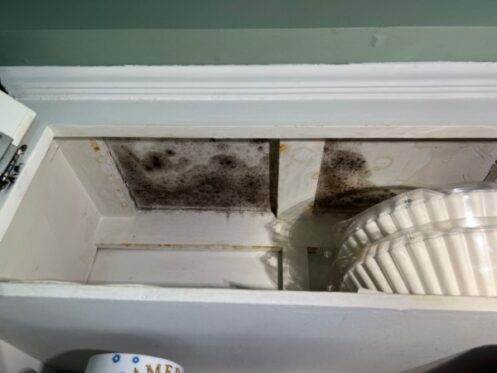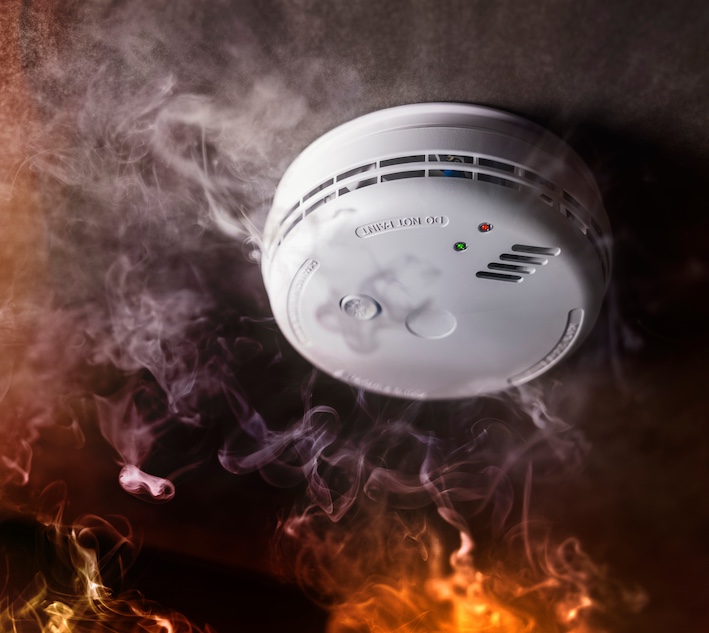Mold isn’t an animal or plant. It’s part of the fungus family that grows from microscopic spores that are found in the air. It lives just about everywhere. You can find it living on the stumps in your backyard, on the windowsill your cat enjoys napping on, or even in your dog’s water bowl.
Certain types of molds can negatively affect your pets. Like with humans, mold can lead to health issues for your pets. But, because animals are typically smaller than people, it only takes small amounts of mold to make your dog, cat, or other pet sick. So, how do you know if your dog or cat is becoming sick because of mold, and what can you do?
Ways Pets Get Sick From Mold
There are a couple of ways that mold spores can enter your dog’s, cat’s, or other pet’s body. One way is through inhalation. This is where your pet inhales mold spores that are floating around in the air. When a cat or dog inhales mold, it can cause lethargy, fever, and various respiratory problems. Symptoms generally include rapid or difficult breathing, nasal discharge, coughing, sneezing, bleeding from the mouth and/or nose, and lethargy.
The other way pets get sick from mold is through ingestion. This is where your pet eats food with mold on it. When dogs and cats eat mold, it can cause damage to their gastrointestinal tract and digestive issues. Common symptoms include stool changes, vomiting, and loss of appetite. Along with this, pets that come into close contact with mold for extended periods of time can also experience a variety of allergic reactions and neurological problems, such as seizures and tremors.
Certain animals are more vulnerable to mold spores than others and can experience more negative effects on their health. Also, there are certain types of molds that pose a greater risk to pets. For instance, toxic mold species (i.e., black mold) are the deadliest ones. They give off mycotoxins that can damage the liver and cause cell death. If cats or dogs are exposed to the spores, it could cause them to experience pulmonary hemorrhage. This is a deadly condition marked by heavy bleeding in your pet’s lungs. If not addressed quickly, exposure to black mold can be life-threatening to your dog or cat.
Mold Exposure Symptoms in Pets
There is a range of symptoms your dog or cat may experience when exposed to black mold. These can range from excessive sneezing and scratching to blood clotting and joint pain issues. Your pet may experience skin sores and rashes from excessive scratching, licking, and chewing. This can then lead to hair loss and bleeding.
Symptoms to look out for include:
- Coughing
- Wheezing
- Labored breathing
- Runny eyes
- Sneezing
- Fur loss
- Runny nose
- Diarrhea
- Skin sores and rashes
- Excessive licking
- Excessive scratching
- Vomiting
- Lameness
- Loss of appetite
- Anxiety
- Convulsions
- Bleeding from the mouth and/or nose
- Trembling
- Changes in behavior
- Lethargy
- Seizures
It’s important to note that many of the symptoms and signs of mold exposure can often resemble those of other types of health conditions. Therefore, if your cats or dogs show any of the symptoms listed above or if you suspect they may have been exposed to mold and are experiencing sickness due to it, you should take them to the vet for evaluation right away.
How to Keep Your Dog and Cat Safe From Mold Exposure
There are some things you can do to keep your cat or dog safe from mold exposure. These include:
1. Seal and Store Food Properly
Store your pet’s food in sealed containers. If possible, it’s best to seal it back in its original store-bought container that contains the expiration date, barcode, batch code, and other essential information you may require. If there’s ever a recall, you’ll have this important information accessible. Keep their sealed food in a dry, cool place that’s free of excess moisture. Wash and dry their containers before you refill them with new food.
2. Wash Hands Thoroughly
Always wash your hands before you handle your pet’s food. For the most effectiveness, you should wash your hands for a minimum of 30 seconds with warm water and soap. This will help eliminate most microorganisms. You should also wash your hands thoroughly again after you handled your pet’s food. This helps avoid any microorganisms (i.e., Salmonella) from the food that can be transferred to household members. Thoroughly washing your hands before and after handling your dog’s or cat’s food will help prevent and/or eliminate the possibility of spreading disease to any members of your household, including your pets.
3. Wash Your Pet’s Food Bowls Daily
You wouldn’t eat off a dirty plate yourself, so why would you expect your dog or cat to do so? Dirty dishes and bowls can collect microorganisms after each meal. Therefore, it’s important that you wash your pet’s dishes thoroughly after every meal. You should also wash their water bowl at least every other day to prevent disease.
4. Inspect Your Pet’s Food
Be sure to inspect your dog’s or cat’s food each day for any forms of contamination. For instance, if you notice anything fuzzy on their food, it’s mold. Throw the food away and wash out their bowl thoroughly. Do not feed your dog or cat contaminated food. Also, you never want to feed your dog or cat expired food either. Expired food has a higher risk of becoming contaminated and losing its nutritional value. Always check the expiration date on your pet’s food before feeding it to them.
Hire the Experts to Eliminate Mold to Keep Your Pet Safe
The above tips can help prevent the growth of mold. But what happens if you already have mold? Many people will be tempted to try and eliminate the problem themselves. This is not a good idea because it leaves room for error. If you miss any mold, you’re putting your dog, cat, or yourself at risk of becoming sick.
Mold can grow in homes very quickly, particularly if there’s any excess moisture, such as after water damage or the introduction of a water source like flooding or a plumbing leak. You need a professional and trained expert to come into your home and assess the situation. If they suspect you have an issue with mold, they’ll offer you mold remediation services.
Mold can easily spread throughout your home and property in a short period of time. When it does, it can produce allergens and irritants that can cause potential respiratory and health problems. Small mold spores can spread through the air in your home and settle on different surfaces, particularly in areas they find favorable. Mold can easily go unnoticed, particularly if there aren’t any visible signs.
Therefore, you should seek experienced and trained mold remediation experts at Pur360 to come into your home for an inspection. Our experts will evaluate how much mold damage you have and then seal off the affected areas. Then, they will eliminate any damaged household materials and get rid of any mold spores and odor. After that, our experts will completely clean and disinfect the affected areas. If needed, any mitigation procedures and repairs will be completed.
To remove mold, our experts use a patented ultraviolet sanitization process that’s proven to kill 99.99% of the surface and airborne viruses. Our ultraviolet sanitization process leaves no residue or chemicals behind. Therefore, there is no need to remove all materials inside your property.
If you notice any signs of mold in your home, give Pur360 a call right away. We offer mold testing, remediation, and restoration services as well as odor removal and ultraviolet sanitization services. Call us today for more information or to schedule an appointment.



